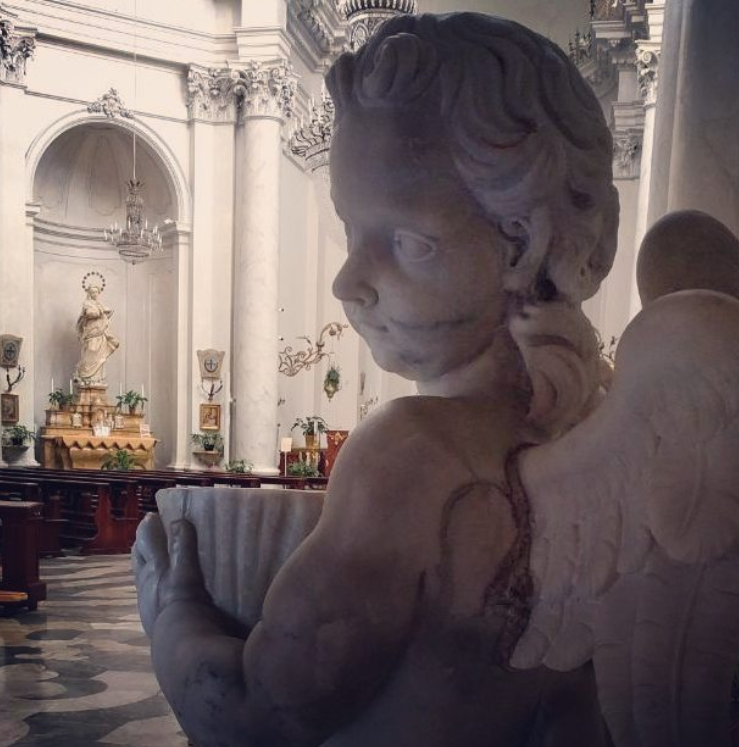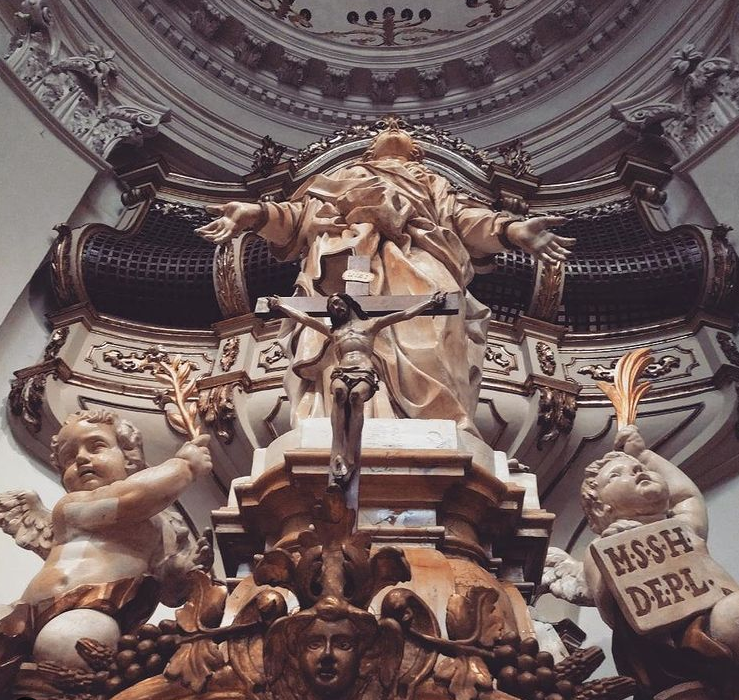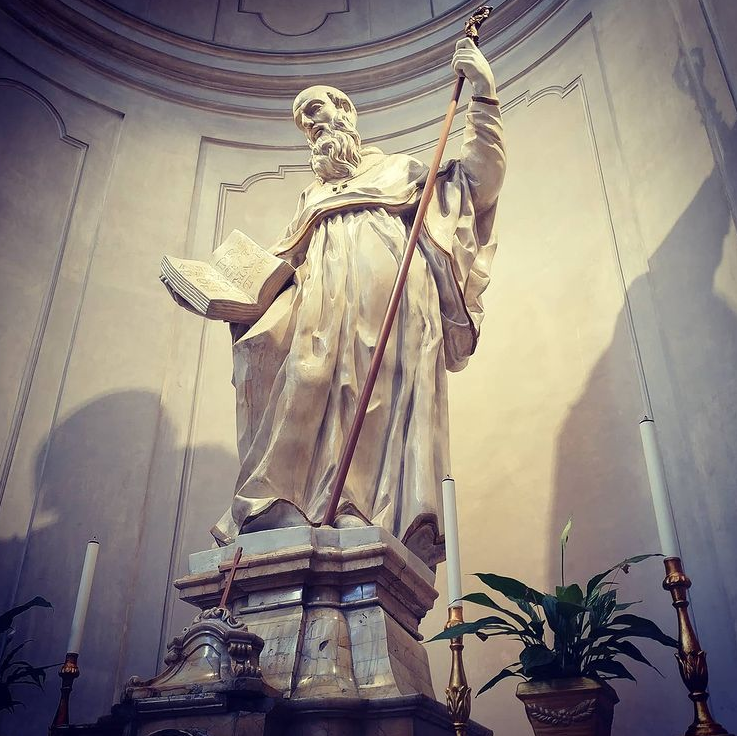Chiesa Badia di Sant’Agata
The Chiesa Badia di Sant’Agata that lies on the north side of the cathedral is one the finest works of architecture, among the many masterpieces that the late Baroque reconstruction following the 1693 earthquake produced in Catania.
Immediately after that disastrous event, a first church was built for the needs of the nuns, reusing and arranging what had survived the previous building. However, this had not yet been completed when in 1733 it was decided to rebuild a new and monumental church, after a re-appropriation of an inheritance that was intended for the construction of a monastery in Paternò.
In 1736, with the purchase of materials, the construction site was started, under the direction of Giovan Battista Vaccarini. As soon as he returned from Rome, the young architect from Palermo applied in this church, in the most perfect forms, the models of the great Roman architecture, skilfully reconciling it with the forms of the local late Baroque tradition. In particular, the Borromininian imprint is very strong in this building, directly derived from the model of the church of Sant’Agnese in Agone in Piazza Navona (Rome).
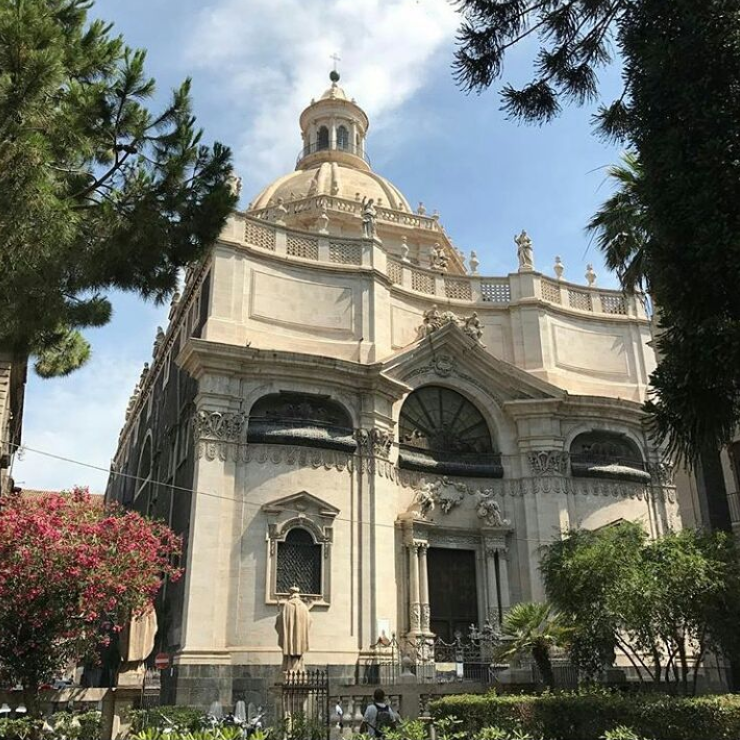
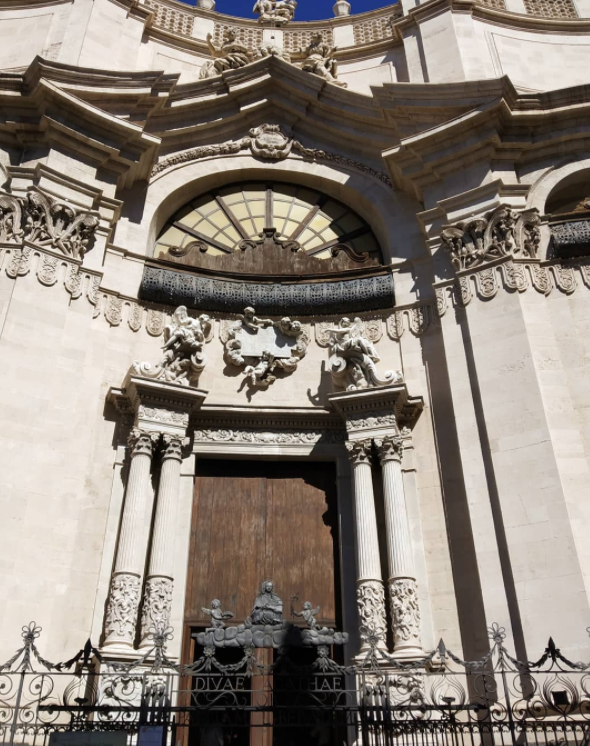
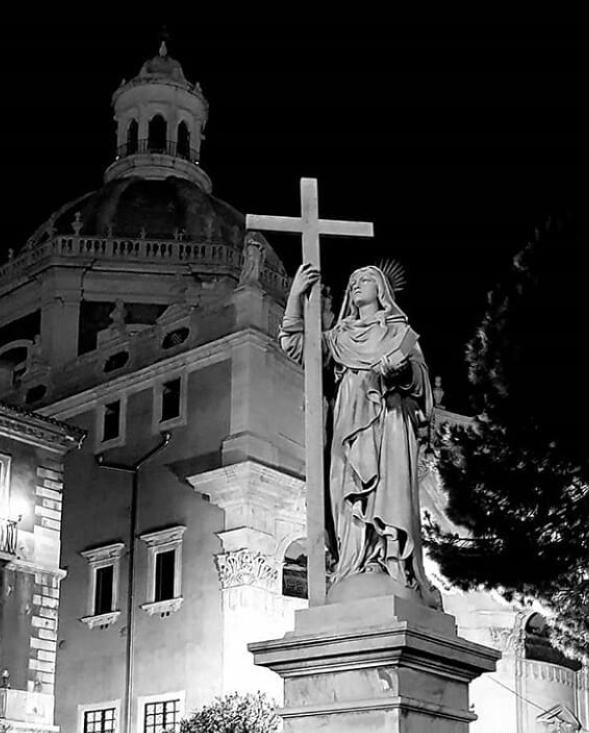
In 1742, as shown by the date engraved in the keystone of the portal arch, the façade had already been completed: in it the seventeenth-century portal of Giovanni Maria Amato, which survived the earthquake, was reused, inserting it into the masterful movement of the façade obtained from the juxtaposition of concave and convex shapes, in an ensemble of extraordinary formal elegance.
The works continued in alternating phases, until 1767 when the dome was completed. On this occasion, Vaccarini was generously benefited by the church insofar, as satisfied with the work done, renounced the rest of the payments that were due to him.
After the death of Vaccarini, in 1768, the interior finishes were carried out by master Nicolò Daniele, who created the valuable bardiglio marble floor on white Carrara marble, perhaps following a drawing already prepared by Vaccarini. Also, Daniele can be attributed to the construction of the altars in yellow Castronovo marble, a material that the architect from Palermo had also thought of to cover the columns of the major order.
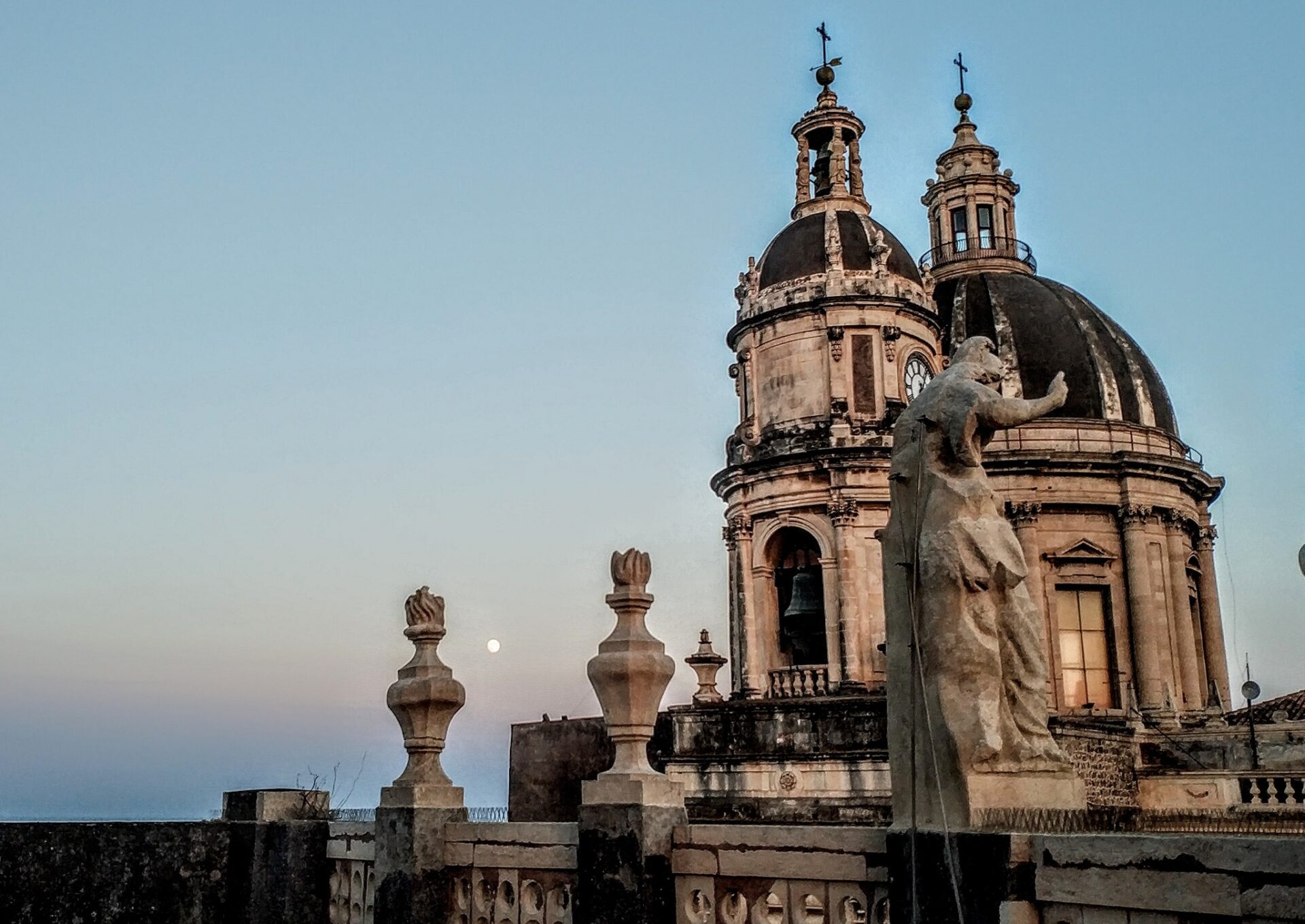
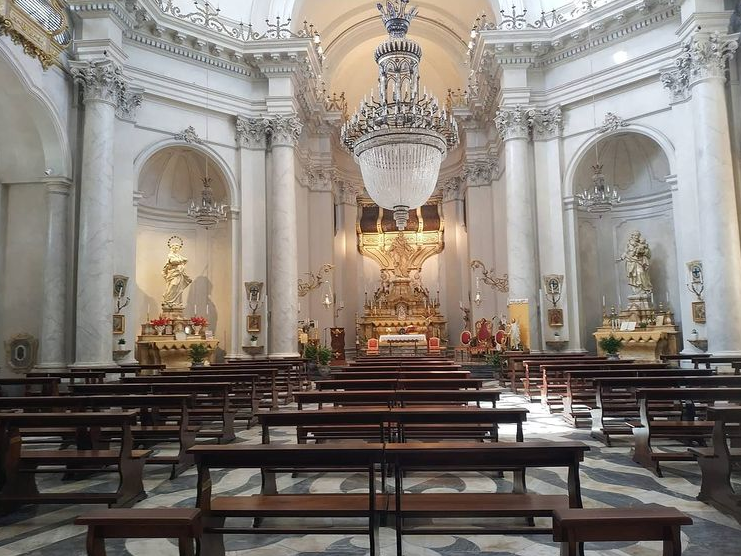
In 1782 the statues of the altars in marbled stucco were created by Giovan Battista Marino, maestro Mario Biondo, and maestro Giovan Battista Amato. In the same year, all the internal and external decorations of the church were completed, in anticipation of the solemn consecration in the presence of the sovereign (1796).
The last phase in the history of the church is that relating to the restoration, started in 2010 with funds from the Archdiocese of Catania and the Otto per Mille of the Italian Episcopal Conference for the reopening to worship and the safety measures after the damage reported by the building on the occasion of the 1990 earthquake. The solemn reopening of the church then took place on October 15, 2012, when by the will of Archbishop Mons. Salvatore Gristina was destined for worship and as a diocesan center for special cultural activities. More
